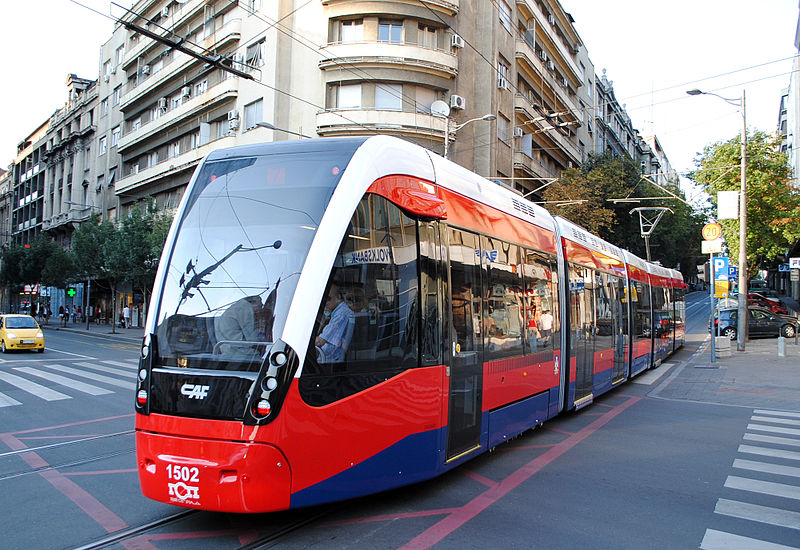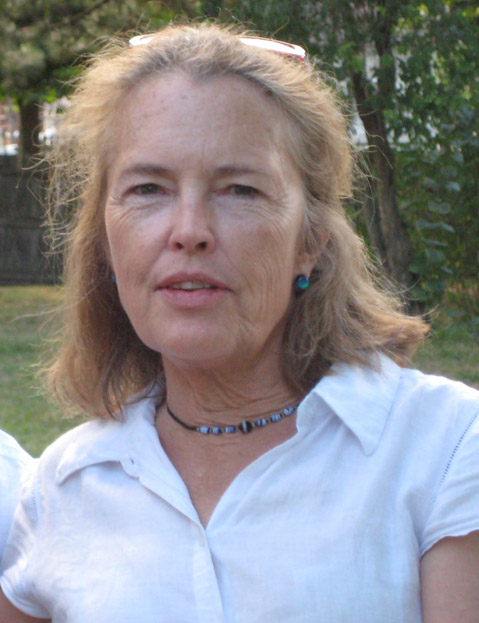Groundhog Day All Over Again
Does Serbia Have Anything to Teach Us About How to Run a National Election?

Belgrade, Serbia—This sun-starved nation spent the first days of April crowded on park benches, faces tilted towards the sun, trying to soak in its warmth after the most deadly winter in 30 years. Babies in Easter finery practiced nascent walking skills on tottering legs, while toddlers chased balls, and their older friends and siblings scooted on scooters, or begged for treats from ice cream vendors newly arrived.
All the while their adult minders smoked, talked on cellphones, and sunned themselves, trying to forget the winter from Hell.

With pivotal Parliamentary and presidential elections set for May 6th, there are some hopeful signs. Serbia is finally a candidate for European Union member status. There are sleek, new, red and white, low slung, Spanish-made trams on the streets. Tennis player Novak Djokovic is the “world’s first racquet,” as locals say. The National Library is open after a suspiciously long five-year makeover, new recycling bins are arriving in a few spots around town, and open-air green markets are brimming with baby Brussels sprouts, new potatoes, lovely curly green kale, red radishes and young homemade white cheeses. There is even a new French bistro to celebrate – Belgrade’s first – that doubles as a school for local talent in Gallic culinary arts.
But that is surface stuff.
More significantly, a new digital archive documenting some 200 years of military history is making it possible for Cold War scholars, military historians, war prosecutors, and ordinary Serbs to finally wrest the region’s complicated history from the State, and to find out what happened to “grandfather” in the brutal years immediately after WWII when Tito “disappeared” and executed thousands of citizens extrajudicially – without trials.
As I write, bodies are being excavated using infra-red technology from the central city of Cacak, and in Kragujevac, slightly to the northwest. During renovations, Italian owners of the Zastava car factory – which was badly bombed and contaminated with PCBs in the U.S.-led 1999 NATO war – found a cement sub-floor concealing at least 25 bodies. These were identified with DNA testing and Tito-era military hit lists, and corroborated by relatives as among the those “disappeared” between 1945 and 1948.
This according to historian Srdjan Cvetokovic, head of the Tajna Groblje, or Secret Graves Commission, who says, “much remains to be done.” Cvetkovic and fellow military historians have created an interactive website where citizens and scholars around the globe can seek information about Serbia’s turbulent post-WWII history or submit military records of long-gone loved ones.
However, few of these crucial historic breakthroughs hold the slightest interest to disillusioned voters in a country where official unemployment hovers close to 24 percent (meaning it’s higher in the south and among Roma), gas prices are $6.50 a gallon, and voters are besieged by candidates from no fewer than 11 political parties.
Political rhetoric here is stale and candidates are bereft of concrete plans for how to create more jobs or a more stable, civil, and EU-style society. “We are way beyond slogans,” said analyst Dragan Kremer, former head of USAID/IREX’s media outreach office.
Goran Cetinic, a writer and elections and media monitor with the European Consulting Group, agrees. “It is a campaign bankrupt of ideas,” he said. More worrying, the Serbian press has few financial resources and little will to expose inconsistencies among the various candidates, or to hold them to previous promises, says Cetinic. “There is little media solidarity on how to cover this election,” he said.
Biljana Srbljanovic, a leading playwright who once considered running for office herself, said, “How would you feel if elections in the United States were like some nightmare scenario where Bush was always running against Clinton? That’s how it is in Serbia: Tadic/Nikolic, Tadic and Nikolic,” like some hellish replay of a political version of the ever-repeating movie Groundhog Day, said Srbljanovic. (Boris Tadic is finishing his second five-year term as President of Serbia and head of the Democratic Party (DS) and Tomislav Nikolic is his challenger from the Serbian Progressive Party, or SNA.)
Elections in all countries make for strange bedfellows. But here in Serbia, the young firebrand speechmaker and Milosevic-opposition leader in 1998-2000, Cedomir Jovanovic, is in a coalition with Vuk Draskovic, a wily, seasoned politician who has changed his spots more than most leopards, said Dusan Velickovic, author and former senior editor of Vreme, an independent weekly. “He is what you call a political pragmatist, or opportunist,” saying what he thinks will work given which way the wind blows, Velickovic said.
Recent polls show Tadic’s coalition in a close race with Nikolic’s extreme right party, which came in second in the last elections. (Right wing in Serbia means leaders are not interested in the larger drive to join the EU; are against the Hague tribunal’s method of justice; are unlikely, to compromise on the status of Kosovo – Serbia’s southernmost province and birthplace of the nation, with dozens of 11th-15th Century Orthodox churches. The fiscal policy is also in conflict with most government efforts to stem corruption. The right-wing also has skin-heads, some factions of which, like skinheads everywhere, tend to be more chauvinistic, anti-gay, sometimes outright thuggish in crowd behaviors.)
Meanwhile, the Radical Party’s head, Vojislav Seselj, is running his campaign from The Hague, where he is on trial for war crimes.
“This election is a farce. No one believes any of the politicians,” said cabdriver Zoran Trifunovic. “We have the same issues as Americans: no jobs, high fuel and food prices and wide-spread corruption,” said Trifunovic, who worries about the future that awaits his three college-age children.
It is the corruption that resonates most with the Belgrade Street. With everyone from contractors to municipal building inspectors, university professors, and traffic cops on the take, it is an issue of unfairness that’s easy to understand. The perception that bribes are what lubricates the system and the reality that laws and court decisions that were finalized years ago are still unenforced, make voters so apathetic and cynical that low voter turnout is a real concern for May 6.
Still, bleak as things seem, believe it or not there are some things we in the United States might want to emulate in the way Serbia runs its elections.
One is the rule that the lists of all parties who put up candidates for seats in the national Parliament must include at least 30 percent women among the choices.
Another firmly enshrined rule is “pre izbora tisina,” or the mandatory 24-hour period of silence that precedes elections. All forms of political appearances, speech, or ads are banned the day before the actual vote. (Robo-calls are not yet de rigeur in the Balkans).
Alll elections in Serbia are held on Sunday, so working folks can get to the polls more easily.
All competing parties are required to send a monitor to each polling station to guard against ballot fixing, and to sign off on the count before district results go to central elections authorities.
Plus, the Serbian presidential campaign will last less than a month!
Talk about bliss! How revolutionary.
Joan McQueeney Mitric grew up in Santa Barbara. Her work has appeared in numerous publications including The New York Times, The Washington Post, The Los Angeles Times, The Atlanta Constitution, and Mother Jones, and scores of outlets in Belgrade, Serbia where she spends half the year and speaks the language.



